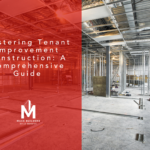Introduction
Architectural consistency is the backbone of franchise identity, serving as a visual representation of the brand’s ethos and values.
Understanding Franchise Design Guidelines
Franchise design guidelines are the rulebook for maintaining brand identity. These often detail the architectural style, color schemes, signage, and interior layouts that franchises must adhere to.
Navigating Local Zoning and Regulations
The challenge often lies in marrying franchise guidelines with local regulations, ensuring that the franchise identity shines through without breaching any local zoning laws.
Materials and Suppliers
Consistency in materials is key. Franchises need to source materials that not only reflect the brand’s aesthetic but are also durable and cost-effective.
Design Adaptability
Design guidelines need to be flexible enough to adapt to various locations while maintaining core brand elements.
Working with Architects and Designers
Clear communication of the franchise’s vision and guidelines is essential when collaborating with architects and designers.
Incorporating Technology and Innovation
As franchises evolve, incorporating modern technology and innovation into designs without losing brand identity is crucial.
Case Studies: Successful Implementations
Looking at successful franchises can provide valuable insights into maintaining architectural consistency.
Overcoming Challenges
From budget constraints to regulatory hurdles, the article discusses strategies to overcome common design consistency challenges.
Future Trends in Franchise Architecture
The article touches upon the evolving nature of franchise design and what the future may hold.
Conclusion
Adhering to franchise design guidelines is vital for maintaining brand integrity, recognition, and customer trust.
FAQs
- Why is architectural consistency important in franchises?
- It reinforces brand identity, ensures customer familiarity, and promotes trust across different locations.
- How do franchises balance design guidelines with local regulations?
- By prioritizing core brand elements while being flexible with aspects that can be adapted to meet local regulations.
- What role do materials play in maintaining design consistency?
- The right materials help in achieving a uniform look and feel that resonates with the brand’s identity, regardless of location.
- How can franchises incorporate modern design while maintaining consistency?
- By integrating modern elements in a way that complements the brand’s traditional design features, ensuring a balance between innovation and consistency.
- What are the future trends in franchise architecture?
- Trends include sustainable design practices, the integration of technology, and modular constructions that allow for both brand consistency and local customization.




